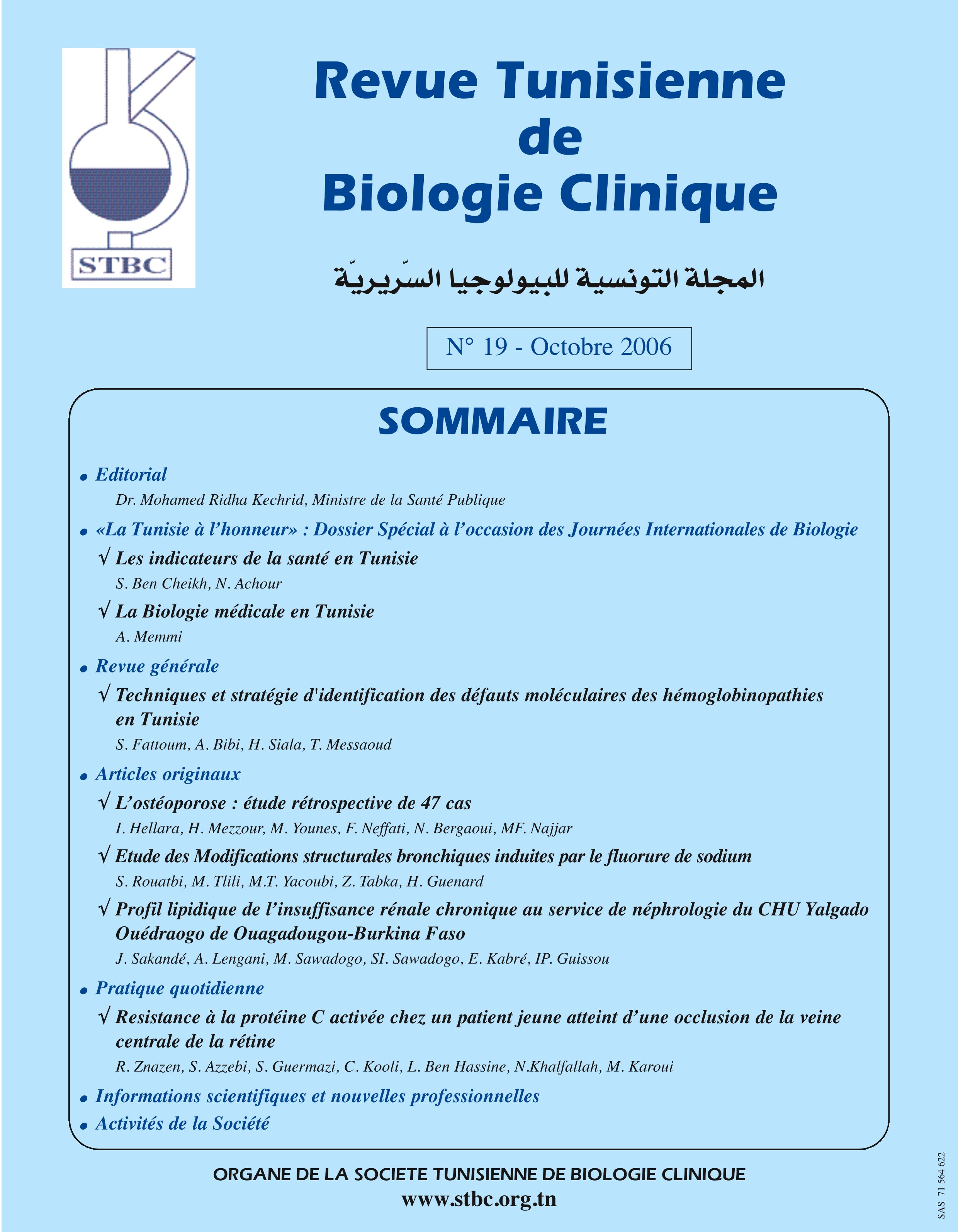Abstract
Thalassemias and sickle cell disease are the most frequent homoglobin disorders in Tunisia. According to the great heterogeneity of molecular defects that are responsible of hemoglobinopathies (more than 400 mutations affecting the α and β globine genes), a large panel of techniques in molecular biology have been developed for the genotype identification and characterization of these diseases. Different techniques using polymerase chain reaction (PCR)-based methodology are involved including the digestion by restriction enzymes, the reverve dot blot and the amplification refractory mutation system (ARMS) methods for Known mutations. Denaturing gradient gel electrophoresis (DGGE) and DNA sequencing are used whenever any mutations were found by the previous methods. Gap-PCR is mainly used to identify large deletions. The strategy used in the molecular characterization of mutations begins by a preliminary tri based on phenotypic data of the studied case. Selection of mutations that should be tested in priority is based on the spectrum of mutations usually observed in the tunisian population. Thus, the cd39 (C◊T) and IVSI-110 (G◊A) mutations that constitute 70% approximately of the total β-thal mutations in the country, are searched firstly in the β-thalassemia carriers. The -α3.7 deletion is also tested firstly concerning α-thalassemia. Application of such a strategy in our laboratory, allowed us to identify about 97.7% of molecular disorders responsible of hemoglobinopathies. This strategy offers the possibility to refine the genetic counsil and to answer in a reliable and more rapid way to the increasing demands of prenatal diagnosis.

This work is licensed under a Creative Commons Attribution 4.0 International License.
Copyright (c) 2006 Revue Tunisienne de BIOLOGIE CLINIQUE

